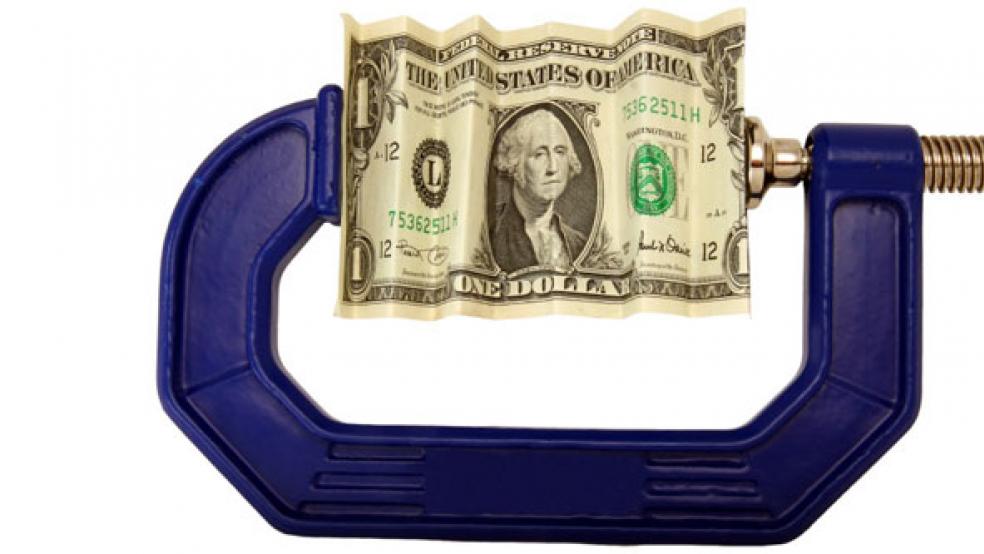The merits of the health care bill signed into law by President Barack Obama on Tuesday may be up for debate, but at least one thing is certain: The nation’s top earners will pay the lion’s share of the $437 billion in tax increases included in the bill to help fund its extensive provisions.
The squeeze will be especially painful because the increases, ranging from a new Medicare tax on investment income to a 10 percent sales tax on tanning salon services, will be layered on top of tax hikes already in the works for 2011 under the president’s budget proposal. Taxpayers with top-of-the-line insurance plans also may face higher premiums.
“The biggest hit is going to be on the high-income earners,” says Mark Luscombe, a principal tax analyst at CCH Inc., a Riverwoods, Ill. unit of Wolters Kluwer that has published a summary of the tax implications of the health care bill. He notes that “people at the lower end of the spectrum” will get the benefit of a tax credit.
Opponents of the bill accuse the president and the Democrats of a having a plan for redistribution of wealth. Those supporting the legislation say it is long overdue and will lower the deficit while providing essential medical care.
The Affordable Health Care for America Act, which is expected to cost some $938 billion over the next ten years, will make health insurance mandatory and extend coverage to 32 million currently uninsured Americans. The act became law Tuesday, but the Senate is debating a reconciliation bill and can offer amendments to make the legislation more acceptable to some opponents.
The full impact remains uncertain as the effects trickle down to the states, which may need to raise taxes to cover increased costs. Here is how the final federal legislation will affect various segments of the population:
Top Earners Will Feel the Biggest Brunt
Nearly half the $437 billion in increased taxes, some $210 billion, will come from two new Medicare levies on upper income taxpayers. Starting in 2013, the current 1.45 percent Medicare tax on earned income will rise to 2.35 percent for single taxpayers earning more than $200,000 and couples that draw down more than $250,000 a year.
These top earners also will face a new 3.8 percent Medicare tax on investment income, including interest, dividends, gains from property sales, royalties, rents and other nonwage income.
With the capital gains tax rate already set to rise to 20 percent from the current 15 percent next year, the Medicare tax on investment income will push the capital gains rate for those taxpayers to 23.8 percent when it goes into effect in 2013.
Taxes on dividends could be even higher. Under current law, the income-tax rate on dividends would rise from 15 percent to a maximum of 39.6 percent next year -- meaning that in 2013 the rate could be as high as 43.4 percent for those in the top tax bracket. However, President Obama has indicated he wants to cap the tax rate on dividends at 20 percent.
Itemizers Will Get Pinched
Current rules allow taxpayers to itemize deductions for eligible medical expenses that exceed 7.5 percent of annual adjusted gross income. Under new rules, that threshold will rise to 10 percent in 2013 for all taxpayers except senior citizens.
A 10 percent cutoff for health care deductions is nothing new for taxpayers subject to the alternative minimum tax. But for folks accustomed to deducting a chunk of medical expenses, the increase from 7.5 percent could hurt. For someone earning $150,000 a year, for instance, the higher threshold could wipe out $3,750 in deductions.
Top-of-the-Line Insurance May Get Pricier
The most generous health insurance policies -- often called Cadillac plans, which get much of the blame for the rising costs of insurance -- will be taxed under the health care bill. Insurers that charge premiums of more than $10,200 for individual coverage or $27,500 for family coverage will face a 40 percent excise tax starting in 2018. That tax is estimated to bring in $60 billion over 10 years.
“The tax is imposed on the insurance provider,” says Luscombe, of CCH. “But the assumption is that it will be passed through in the form of increased premiums to participants.”
Diligent Savers Are Penalized
The bill deflates the benefits of employer-provided flexible spending accounts (FSAs). Employees will still be able to sock away tax-free money for out-of-pocket health care expenses, but come 2013 the maximum annual will drop from $5,000 to $2,500. What’s more, taxpayers will no longer be able to use the money for over-the-counter medications unless they are prescribed by a doctor.
And for those who squirrel away money in health savings accounts (HSAs), beware: The penalty for using funds in the accounts for anything other than qualified medical expenses will rise from 10 percent to 20 percent in 2011.
Many Low- and Middle-Income Families Get a break; Some Face Higher Costs
Once it becomes mandatory for individuals to have health insurance in 2014, a new tax credit will be available to defray the cost for households whose annual adjusted gross income is at or below four times the nation’s poverty level. Currently, the upper threshold for a family of four would be $88,000.
The tax credit is designed to ensure that these taxpayers don’t spend more than a small percentage of their income, anywhere from 2 percent to 9 percent, on health insurance premiums.
“People at the lower end of the income spectrum who have already been paying for health insurance will see a tax benefit under the bill,” says Luscombe, of CCH.
However, beginning in 2014, those aged 18 or older who don’t have insurance will have to pay an annual penalty, which will start at $95 in 2014, $325 in 2015, $695 in 2016, and indexed for inflation after that.
Recent College Grads Get Some Help
While younger taxpayers traditionally have struggled to find affordable health insurance, now they have choices.
The health care bill allows children to stay on their parents’ insurance until age 26. This is usually cheaper than buying individual policies, thanks to parents’ group rates and pretax premium payments, says George G. Jones, managing editor at CCH.
Now, however, younger folks between jobs may qualify for the tax credit for lower-income taxpayers. This could look even better than staying on mom and dad’s policy.
Small Business Owners Get a Break
Employers with fewer than 25 employees will qualify for a tax credit if they provide health coverage for their workers. Between tax years 2010 and 2013, the credit will be equal to a maximum 35 percent of the amount a small employer contributes to a worker’s premium.
“It’s not a dollar-for-dollar credit -- there will still be out-of-pocket expenses for small businesses,” Luscombe says. “But there is no penalty for not providing insurance.”
Companies with 50 or more employees face a $2,000 penalty per employee if they don’t provide insurance, beginning with the 31st employee.
The Bottom Line
The new taxes will roll out over eight years. Most penalties under the bill can be avoided by complying with new requirements. The good news for taxpayers earning more than $250,000 a year (or $200,000 for singles) is that those income thresholds aren’t indexed for inflation. “This will put pressure on Congress as more individuals -- aka voters -- earn over those amounts as the years roll by,” says CCH’s Jones.





